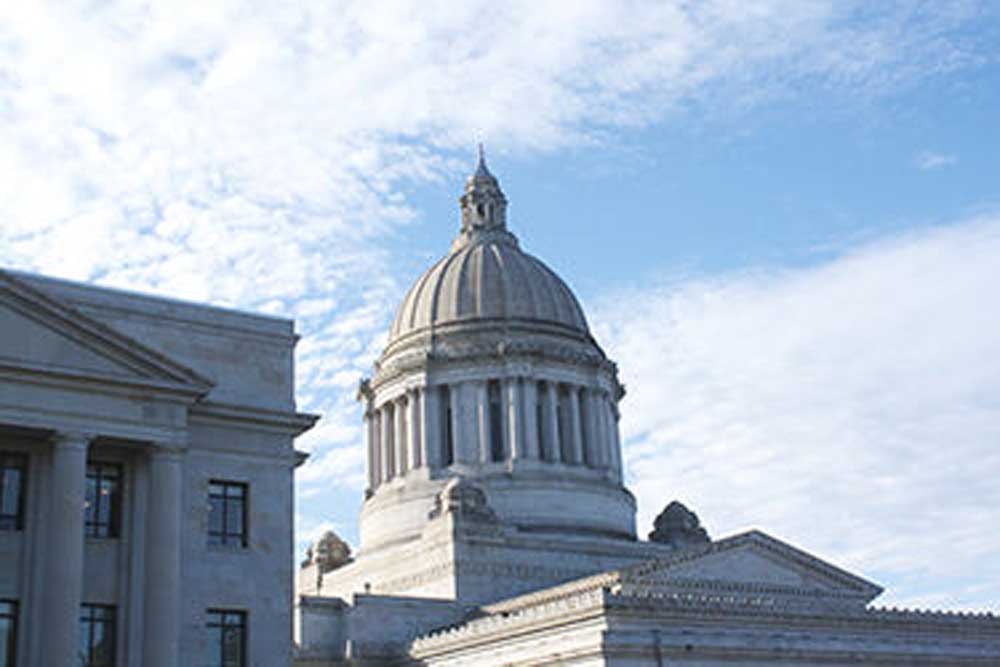Washington lawmakers take step to join California on cap-and-trade
Published 8:00 am Monday, March 4, 2024

- Washington lawmakers are considering extending a program that allows fish-enhancement organizations to restore habitat without local permits.
OLYMPIA — House Democrats cleared the way Feb. 29 for the Washington Department of Ecology to negotiate with California and Quebec, Canada, to combine cap-and-trade programs.
The two-state, one-province alliance could lower cap-and-trade taxes by creating a larger pool of carbon allowances for energy suppliers and investors to bid for, according to Democrats.
Republicans said forming a partnership with California was unlikely to lower energy costs and highlighted official reports indicating California regulators will act to drive up cap-and-trade taxes to achieve climate goals.
Democrats rejected a Republican proposal that staying in cap-and-trade auctions not result in higher taxes.
“There should most definitely be a cap to protect the taxpayers, the ratepayers and drivers,” said Rep. Ed Orcutt, R-Kalama.
California cap-and-trade
Senate Bill 6058 doesn’t commit Washington to a merger, but it authorizes Ecology to align details of Washington’s cap-and-trade program with California’s and enter into an agreement without legislative approval.
The House and Senate must reconcile minor differences before the bill goes to Gov. Jay Inslee to sign. California and Quebec have held joint cap-and-trade auctions since 2014.
Ecology Director Laura Watson announced last year her department would pursue linking with California and Quebec and said she expected a merger to ease inflation caused by Washington’s stand-alone program.
Inslee said in September he wanted to reduce the cost of carbon allowances and that a merger might do that.
Washington’s cap-and-trade tax on gasoline is currently 41.5 cents per gallon, compared to 33.4 cents in California, based on a formula widely used by economists. The tax changes with each quarterly auction.
California has a less stringent cap on carbon emissions, accounting for the difference in the states’ cap-and-trade taxes. California, however, is closing the gap.
California’s cap-and-trade tax has increased by 50% in the past year. The California Air Resources Board is considering ways to drive the tax even higher by shrinking the pool of allowances available to bidders.
The scenarios presented by the board suggest allowances prices will increase, the California Legislative Analyst’s Office reported in February.
California is not on pace to achieve carbon-reduction goals, according to the report. Making cap-and-trade more stringent would presumably force down carbon emissions, but drive up energy costs, the report stated.
California already has the highest gasoline prices in the U.S., according to the AAA car club, and the highest electric rates in the U.S., according to the Energy Information Administration.
California adopted cap-and-trade in 2006 and regulators acknowledge it raises energy prices. Its impact on carbon output is unknown, according to a report last fall by the Legislative Analyst’s Office.
“To our knowledge, no studies have produced a reliable estimate of the emission reductions achieved by the cap-and-trade program so far,” the report reads.
The House spent three hours debating the merger bill. Republicans dominated the floor speeches, but majority Democrats dominated the voting, rejecting all GOP amendments and then passing the bill on a party-line vote.
At times, legislators previewed the debate over cap-and-trade’s future, with or without California and Quebec. If Initiative 2117 passes in November, cap-and-trade will be repealed.
“We have a climate crisis and this state has risen to the challenge to address it with the passage of the Climate Commitment Act,” said House Environment and Energy Committee Chairwoman Beth Doglio, D-Olympia.





